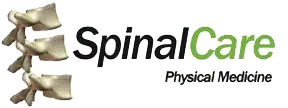By Dr. John Dettmer, D.C.
A man driving home in his pickup truck after visiting friends swerved when a deer darted in front of his vehicle. In his attempt to avoid the deer, he went into the opposite lane and struck another vehicle head on. The other car was a minivan occupied by a family of four. The resulting accident claimed the life of the driver and one other passenger from the oncoming vehicle. The three other passengers were seriously injured. If the driver had simply hit the deer he most likely would only have had to call a tow truck and would have walked away from an accident.
An estimated 1.23 million deer-vehicle collisions occurred in the U.S. last year, costing more than $4 billion in vehicle damage according to State Farm, the nation’s leading auto insurer. In Indiana one in every 70 drivers will hit a deer. Only five other states have more deer-related accidents.
These crashes typically result in the death of 150-200 humans, 10,000 injuries and $1.1 billion in property damage annually. Most injuries occur when a driver attempts to avoid striking a deer.
Forty percent of deer-car crashes occur between 6 and 8 a.m. and 6 and 8 p.m. Deer can appear suddenly and without warning, but knowing how to react and where and when they are most likely to strike can greatly reduce your chances of being involved in an accident.
The leading cause of accidents, injuries, and deaths from deer-related accidents occur when vehicles swerve in an attempt to avoid hitting a deer. This can result in vehicles moving into oncoming traffic, crashing into trees and other objects or evening rolling over. It may be against a driver’s first instinct, but the safest thing to do is slow down as much as possible and let your vehicle strike the deer. If you can train yourself to not swerve to avoid deer in the road you will keep yourself, your passengers and other drivers much safer. Brake firmly when you notice a deer in or near your path, but stay in your lane.
Pay attention to posted deer crossing signs. These signs are placed in areas known for high deer traffic. It is important to note that even if there is no posted deer crossing sign it is important to remain vigilant as deer may appear anywhere.
Know how deer travel. While deer may be active any time of the day, the majority of deer-related car accidents occur starting at dusk and during the evening. And, deer mostly move in packs. When you spot one deer, it is likely that there are more nearby.
High beams should be used at night as much as possible to spot deer in the road ahead or any that are along the side of the street.
Always wear your seatbelt. In a study of fatal animal crashes, 60 percent of people killed were not wearing a seatbelt. Sixty-five percent of people killed in animal related crashes while riding motorcycles were not wearing a helmet.
Do not rely on devices such as deer whistles, deer fences and reflectors to deter deer. These devices have not proven effective.
In the event your vehicle strikes a deer, try to avoid going near or touching the animal. A frightened and wounded deer can hurt you and further injure itself. If the deer is blocking the roadway and poses a danger to other motorists, you should call the police immediately.
If you are in an accident involving a deer and have any neck, arm, shoulder, back or leg pain call SpinalCare Physical Medicine for a complimentary consultation. It never hurts to be checked out after any type of accident.
